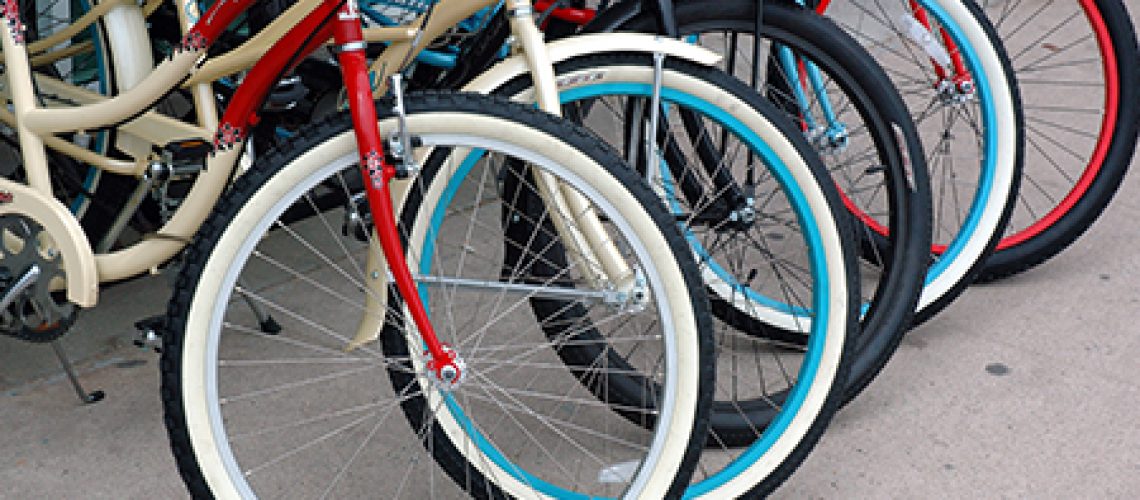How did you get to work this morning? How did you get home last night? How do your children get to school?
If you are an American, the answer is probably by car. And that's too bad.
I used to ride my bike for one of two reasons—racing or training. I never used my bike as a mode of transportation. It seemed to be both cumbersome and impractical, and I figured I spent enough time in the saddle without logging miles to the grocery store. I was wrong.
One day last summer, I found a little commuter bike at Boulder Community Cycles, and it got me thinking…
Like many things good for people and the environment, bicycle commuting isn't mainstream, but it is cheap and reliable, and a great form of exercise. I thought about all the hours I have spent in traffic, feeling anxious and irritated. I then thought about all the time I have spent on the seat of a bicycle, looking around at the world and feeling the wind and wanting to ride just a little bit longer. I thought about my commitment to live simply, and then I tried reconciling that with driving an expensive car with expensive tires and the need for constant and costly maintenance.
So, I went home with that red Schwinn bicycle.
Since that time, I have basically abandoned my car. Don't get me wrong: I still own a vehicle, and I drive it every once in a while. I sometimes even enjoy the autonomy of being in my own sealed steel bubble, adjusted to the perfect temperature and able to transport me quickly from place to place. But there is something magic and connected and raw about being on a bicycle, where you are part of the world instead of being alienated from it. My kids love it, too, insisting that we make all our trips by bike. They like the feeling of connection and community that a bicycle brings about. They nod and wave to other riders, chat at the bike racks when we go to park, and interact with the people headed out for a run or walking their dogs.
Is it dangerous?
There are real risks associated with cycling, including the risk of crashing or being hit by a vehicle, and neither should be ignored. Still, cycling is actually safer than transportation by car. A company known as Exponent Corporation did a meta-analysis examining a variety of activities, and determined that the number of fatalities per million hours of exposure was 0.26 for biking, 0.47 for driving, 1.53 for living (all causes of death), and 8.80 for motorcycling. In other words, they found that the risks of biking were about half that associated with driving and a sixth of that associated simply with being alive.
At the same time, cycling has a positive impact on human health. A recent study published in Environmental Health Perspectives estimated that commuting by bicycle adds, on average, 3-14 months to a person's life expectancy. A 2007 report from Cycling England came to a similar conclusion.
What if you have to go really, really far?
Some trips are too far to manage by bike alone, but most forms of public transportation are equipped to hold bicycles, as well. You can augment commuting by bike by using Light Rail or buses. Generally, though, Americans make a lot of shorter trips that can easily be managed by just a bicycle. The average driving distance between work and home in the US is only 16 miles, and the majority of trips we make in this country are less than eight miles from our doorstep to destination. In essence, riding a bicycle will add mere minutes to your commuting time as compared to driving your car.
How will I carry everything I need?
A basket, a couple of touring panniers, even a messenger bag can hold a large volume of stuff. I can easily transport both of my kids, four or five bags of groceries, a violin and two backpacks on my bicycle. I know. It's happened.
But what about a shower? How will I clean off at the office?
People often worry about this, and somewhat unnecessarily. Keep in mind that most trips are short, and generally not undertaken at the hottest point of the day. Given that, it's easy to arrive at your office or school without being sweaty or stinky.
Increasingly, clothing manufacturers are taking into account the needs of bike commuters and making products with cycling in mind, with more coverage at the back and fabrics that are wrinkle-resistant, repel water and clean-up easily. You can, of course, wear any clothing with a bit of stretch and breathable fabric, and show up to work looking just fine. Some people choose to leave a change of clothes at the office instead of commuting in their work attire. I have no such inhibition, but it's also a viable option. There are some great wipes out there, if you are truly concerned about getting clean when you get off the bike. I like the Paper Shower and the Action Wipes brands, personally, but I know plenty of people who find that baby wipes do the trick.
Does it require a lot of pre-planning?
Not really. You’ll want to get your bike tuned up if it has been a while since you last got out on the road. You want to make sure you bicycle is both safe and comfortable.
You'll also want to have on hand the tools to manage any kind of minor mechanical event. I keep with me a pocket sized multi-tool, two spare tubes, a tire lever, a hand pump or a couple of air cartridges and a dollar bill (in case I need to use it as a tire boot).
Clearly, you'll need a bike lock. This is really a question of personal preference. A lot of people favor the heavier U-Locks, while I prefer a simpler and compact cable lock. Regardless, invest in a good one. A few extra dollars on the front-end might save you a lot of money down the road.
Of course, I also make certain to wear a helmet and I check the forecast before heading out. In Colorado, it's wise to invest in good rain gear that can double as a light wind jacket. Cycling-specific rain jackets will have more fabric in the back, and will keep the mud and dirt off your pants. Most can be rolled up in a tiny ball, so as not to take up any space you might need for cargo. Eye protection is also important to keep you safe from debris and bugs.
If you are nervous about riding in traffic, you might take a little extra time to plan your route. Colorado is very bike-friendly, so it's surprisingly easy to navigate greenways and bike paths, and find roads with designated bike lanes. If you need help identifying the best routes, most local bike shops will have area maps along with some words of advice.
Commuting by bike is a great way to squeeze in a little exercise amid a hectic schedule, or to save a little money in gas, or to reconnect with the world around you or… well… to fall in love with the feeling you had when you first learned to ride a bike and felt the freedom of going somewhere using your own two legs. You can break free from traffic gridlock, ride off a little stress, and enjoy the long way home through the park or along the river. Training is what I do, seven days a week, every single day. Commuting by bike is different, though. It brings me back to all the reasons I first found my way to the sport of cycling, where speed and endurance and winning races no longer matter, and it's just about being out there, turning the pedals.
Professional cyclist racing with Team Novo Nordisk, Becky is a mom of two and active proponent of better nutrition in schools who lives with her family in Longmont, Colo.

